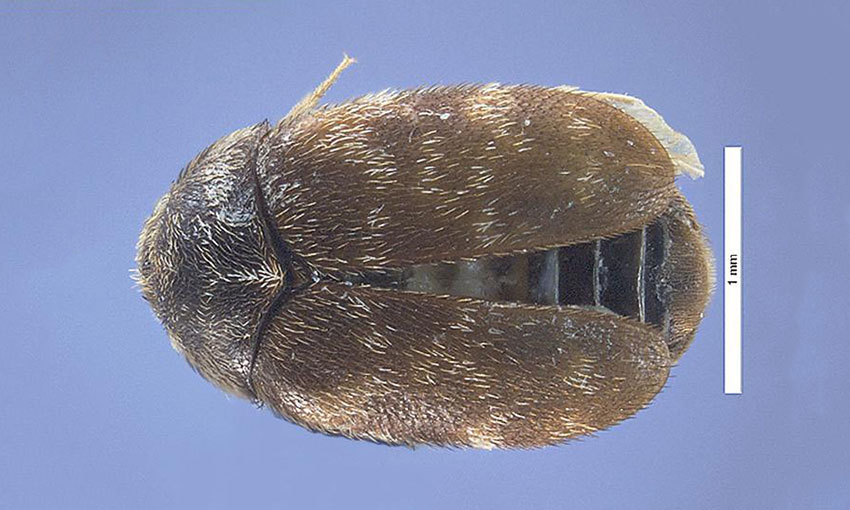IN a pre-budget announcement, the federal government said it was providing a new $371-million biosecurity package that “strengthens Australia’s ability to keep out exotic pests and diseases and improve our ability to fight an outbreak”.
Prime Minister Scott Morrison said the government is stepping up efforts to stop threats such as African swine fever, khapra beetle and foot and mouth disease entering Australia.
“Protecting our borders is as much about protecting our livestock, crops and environment from diseases that have the potential to devastate them and the livelihoods they support, as it does the health of Australians during COVID-19 or protecting Australia’s national security,” Mr Morrison said.
“Australia’s biosecurity system protects $42 billion in inbound tourism, $53 billion in agricultural exports and 1.6 million Australian jobs across the supply chain.
“This investment is about building a protective ring around Australia to safeguard our industry as well as the rural and regional communities that depend on it. There will never be zero risk, but we are committed to reducing the risk where possible.
Minister for Agriculture, Drought and Emergency Management David Littleproud said the package is comprehensive.
“It complements the reforms we are implementing across our biosecurity system, to make it modern, efficient and keep Australians safe,” Mr Littleproud said.
“Those reforms include investment and business improvements to address recommendations made by the independent Inspector-General of Biosecurity, including efforts to manage the unique public health risk posed by passengers and crew on arriving international vessels.”
Mr Littleproud said the government would invest in technical systems to keep biosecurity threats out of Australia, including through new screening technologies for people and goods at the border.
“We will fund a series of ground-breaking trials to screen for biosecurity risks offshore and continue the development of modern, innovative detection systems,” he said.
“We are investing in better management of hitchhiker pest risk before they reach Australia, through expanding offshore management of risks and strengthened border interventions of shipping containers, while ensuring the safe, efficient clearance of low-risk commodities.”
Mr Littleproud said building community and industry awareness of our biosecurity system is also essential to ensuring the effectiveness of the system.
“This is why we are investing to increase importers’ and individuals’ understanding of their role in the system, including through a new biosecurity brand and targeted biosecurity campaigns,” he said.
“This package demonstrates our commitment to our agricultural sector and unique environment.”
The biosecurity package includes:
- $1.5 million to review current systems and bust congestion for importers;
- $96.8 million for the offshore treatment provider assurance program, and data and technology advancements to rapidly identify containers for intervention;
- $25.5 million for modern technologies to improve the speed and accuracy of pest and disease identification at the border;
- $34.6 million for research and improved field tools to better understand how pests and diseases could enter the country, particularly in northern Australia;
- $19.5 million to trial pre-border biosecurity screening technology on inbound and outbound passengers;
- $28.7 million to expand the Maritime Arrivals and Reporting System to include reporting on international aircraft and non-commercial maritime vessels;
- $31.2 million to improve management of biosecurity risks associated with incoming international mail, by automating workflow, modernising risk assessment capability and using 3D X-ray technology;
- $58.6 million to continue and expand the 2019-20 investment in preventing African swine fever (ASF) from entering Australia through: increasing frontline screening activities for ASF; supporting assets and tools to detect porcine products; and capability building exercises in Australia and neighbouring countries to improve detection of and response to ASF outbreaks;
- $67.4 million to support Australia’s biosecurity preparedness and response capabilities, including delivery of a national scale preparedness exercise to stress-test the biosecurity system; building and maintaining a national surveillance information system on the national animal sector; operational diagnostic equipment for testing and molecular diagnostics; and epidemiological and economic modelling to support surveillance prioritisation;
- $3.9 million to increase community and business biosecurity awareness through targeted awareness campaigns focusing on significant biosecurity threats such as hitchhiker pests, developing education and communication materials, and conducting social and market research; and
- $3.2 million, already announced, to trial new industry arrangements that aim to reduce red tape and biosecurity regulatory costs for importers and agricultural businesses.

